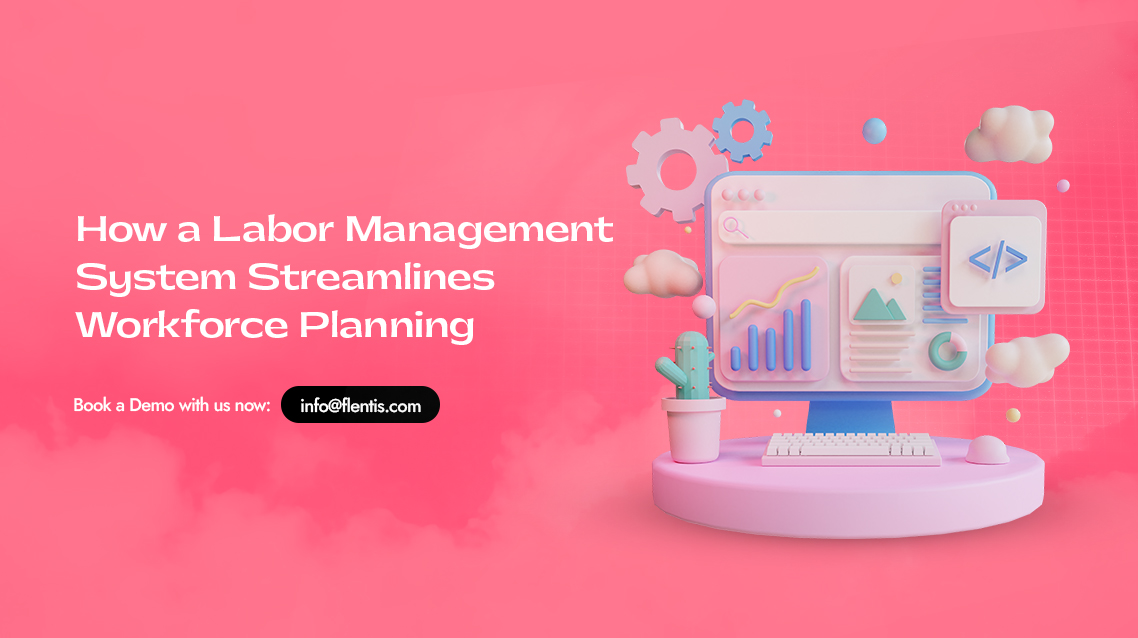How a Labor Management System Streamlines Workforce Planning

Employee scheduling has come a long way from pen-paper and spreadsheets to designing the best schedules on platforms like labor management systems. Traditional methods of workforce planning often face a multitude of hurdles:
Manual Scheduling: Creating and organizing schedules for employees is a rather cumbersome process, which can only be aggravated if the team is large.
Communication Gaps: Lack of clarity in discussing changes, shift schedules, or conflicting schedules leads to confusion and frustration.
Inefficiency: Manual techniques do not scale well for these situations, it becomes challenging to manage the workforce and address variable requirements.
These limitations often translate into:
Wasted time: Managers devote many hours to moving schedules and tackling conflicts.
Employee dissatisfaction: Lack of flexibility or inaccurate schedules could cause decreased morale and or increased turnover.
Compliance risks: Using manual workflow raises the probability of errors and non-compliance with labor laws and regulations.
Enter the Labor Management System (LMS):
The Labor Management System is a revolutionary tool for current workforce management as it can miniaturize many of the routine processes associated with your employees’ management.
It is a solution that focuses on managing the various aspects of working with employees. It solves the problems posed by manual approaches to scheduling, time, and tasks that can be easily automated. This, in turn, leads to the effective allocation of employees based on their skills and their availability, proper communication regarding changes in shifts and schedules, and up-to-minute information about the workforce. Lastly, an LMS enables business entities to manage human resources efficiently, minimize expenditure, and adhere to legal requirements on labor.
Contrary to just creating and designing a schedule, a Labor Management System has a lot more to offer:
Automated Employee Scheduling: Ditch the manual process! In essence, the LMS incorporates the relative level of employee skill, availability, and current workloads to produce optimized work schedules. This can be useful in ensuring that the right persons at the right time are doing any given work.
Time and Attendance Tracking: It is high time we bid farewell to the practice of filing paper timesheets. Through the LMS employees can make electronic clocks in and out thus granting the company correct data usage when applying pay and determining compliance with the set labor laws on working hours.
Streamlined Task Management: Assign tasks directly within the LMS, track progress in real-time, and monitor project timelines. This enhances teamwork, encourages people to be answerable for their work, and guarantees that work is effectively executed.
Predictive Labor Forecasting: Finally, the LMS extracts historical information about workload over time, skills of the employees, and requirements of specific projects. This makes it easy for businesses to plan for future labor and be in a position to tweak their staff numbers according to the market demands.
Data-Driven Insights with Reporting and Analytics: The LMS comes with complete reporting of workforce performance metrics such as output rates, working extra hours, and truancy rates among employees. This knowledge helps to understand what should be changed for the better, where to invest, and how to decide the number of employees needed.
Benefits of using a Labor Management System:
Slash Scheduling Time and Effort: You don’t need to spend hours creating a schedule from scratch. An LMS is constructed to achieve this by considering employee skills, availability, and other workload considerations. This reduces the time managers spend on it, and they can spend their time on other important activities.
Boost Accuracy and Efficiency: The manual allocation process usually causes a lot of incongruencies such as inconsistencies and mismatches. An LMS addresses this by providing ways of identifying the personnel to assign a particular task during a given time. It equates to more efficiency and output in human resources; hence improving the work output.
Bridge the Communication Gap: Simply, anything you do to increase the light shed upon your business should be done to the best of your ability. It facilitates better communication as the managers and employees can share schedules, new information, and shift preferences in one place. This is found to be efficient and effective in its goals because it saves time and avoids confusion.
Unlock Cost Savings: The efficient use of the labor factor is one of the essential benefits of technical improvements. An LMS helps identify areas where resources are underutilized or overallocated. This allows businesses to streamline staffing needs, potentially reducing labor costs.
Minimize Compliance Risks: These procedures are often labor intensive and one would cringe at the thought of how labor laws are violated daily given the many errors that occur. That means LMS helps minimize the non-compliance risk, engaging the employees in effective operation, and controlling such activities as time tracking.
Case Study
A case in a huge retail chain store across the US with more than 10,000 employees was experiencing increased cost and lack of happiness from employees resulting from manual schedules. After implementing an LMS with Flentis, they achieved:
35% reduction in scheduling time for managers.
15% decrease in labor costs due to optimized workforce allocation.
Improved employee satisfaction scores by 20%.
Summary
Altogether, the current approaches to workplace planning present some unmanageable challenges for defining efficiency, communication, and managing tasks in real fabrication. So, we encounter Labor Management Systems as a strong innovative tool capable of managing such processes as scheduling, communication, performance tracking, and more.
If you need better & statesman business workforce planning in pursuit of advanced labor & staff servicing and an improved competitive edge, experience how FlentisPRO VMS is a great answer to the organizational difficulties in proper workforce planning.
Post Your Ad Here
Comments